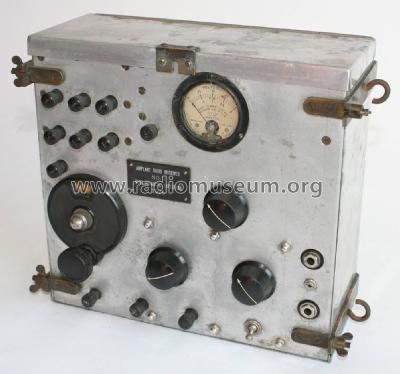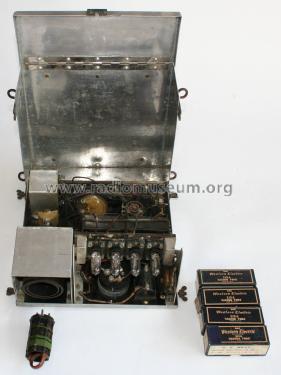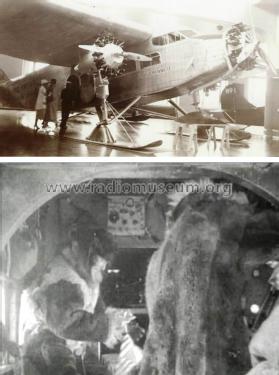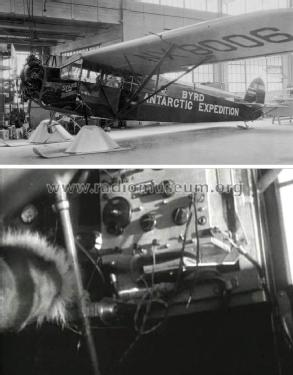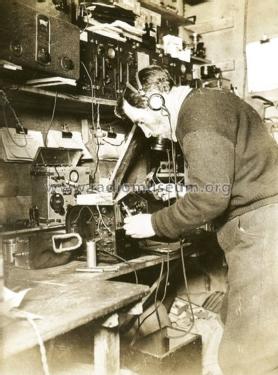Byrd Antarctic Expedition Airplane Receiver
National Electric Signaling Co. (NESCO) or Supply; Washington, D.C.
- Land
- USA
- Hersteller / Marke
- National Electric Signaling Co. (NESCO) or Supply; Washington, D.C.
- Jahr
- 1928
- Kategorie
- Kommerzieller Empfänger (auch Amateurbänder)
- Radiomuseum.org ID
- 278452
-
- anderer Name: National Electric Signaling Co. || National Electrical Supply Co.
- Anzahl Röhren
- 4
- Hauptprinzip
- Spezialschaltung (siehe Bemerkungen)
- Wellenbereiche
- Mittelwelle und Kurzwelle.
- Betriebsart / Volt
- Akku und/oder Batterie
- Lautsprecher
- - Für Kopfhörer oder NF-Verstärker
- Material
- Metallausführung
- von Radiomuseum.org
- Modell: Byrd Antarctic Expedition Airplane Receiver - National Electric Signaling Co
- Form
- Diverse Formen, unter Bemerkung beschrieben.
- Abmessungen (BHT)
- 12 x 11 x 6 inch / 305 x 279 x 152 mm
- Bemerkung
-
The First Byrd Antarctic Expedition of 1928-1930 brought 14 radio transmitters, 9 transceivers, and 22 receivers to support the Expedition and conduct research. The Expedition resulted in the first aircraft flight over the South Pole in 1929, and this model is the High Frequency (HF) Airplane Radio Receiver used on the aircraft brought to Antarctica. The receivers were designed by Malcolm Hanson, the chief radio engineer of the Expedition, and a Naval Research Laboratory (NRL) radio engineer. These receivers were built by members of the Expedition under the direction of Hanson, from kits of parts made up by the National Electrical Supply Co. (Nesco) of Washington DC. Only 4 of these receivers were built using a super-regenerative circuit with four Western Electric Type 215 “peanut” tubes. Plug-in coils gave the receivers a wavelength range from 17 to 92-meters, and from 500 to 700-meters. They were installed in the Expedition aircraft and also used in the Expedition base radio station (WFA) at Little America Antarctica for reception of the aircraft transmissions. They worked so well, that they were also used frequently for short-wave broadcast reception from the United States during the Expedition.
- Autor
- Modellseite von Richard Groshong angelegt. Siehe bei "Änderungsvorschlag" für weitere Mitarbeit.
- Weitere Modelle
-
Hier finden Sie 31 Modelle, davon 29 mit Bildern und 2 mit Schaltbildern.
Alle gelisteten Radios usw. von National Electric Signaling Co. (NESCO) or Supply; Washington, D.C.
Sammlungen
Das Modell Byrd Antarctic Expedition Airplane Receiver befindet sich in den Sammlungen folgender Mitglieder.
